
A8_Microfluidics_fundamentals_II
.pdf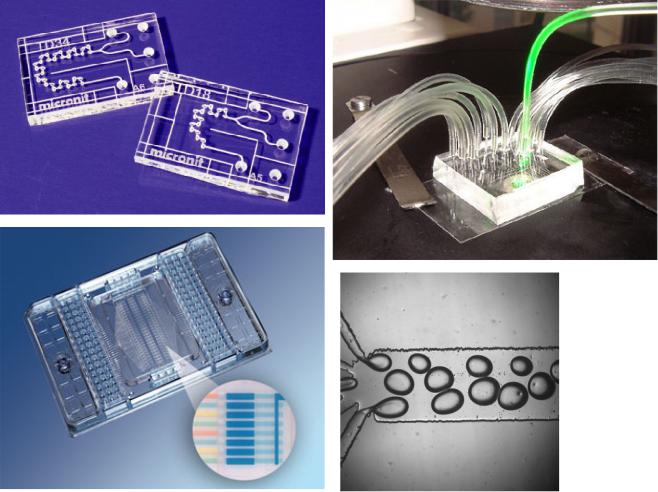
A8 – Microfluidics II
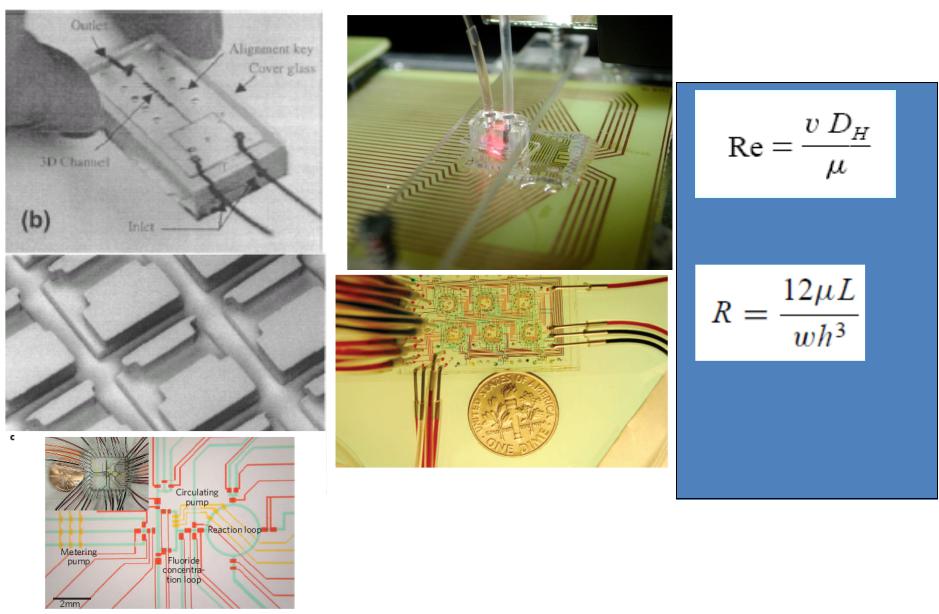
Microfluidic structures
Integrated Microimmunoassay (INESC MN)
laminar flow
short diffusion times
high hydraulic resistance small volumes
large S/V ratio
surface tension important
A microfluidic chemostat (S. Quake, Caltech)
Integrated components: Actuators valves mixers pumps / Sensors / Systems macromolecular analysis DNA analysis enzyme assays immunoassays cellular analysis cytometry cell-based assays cell biosensors cell culturing
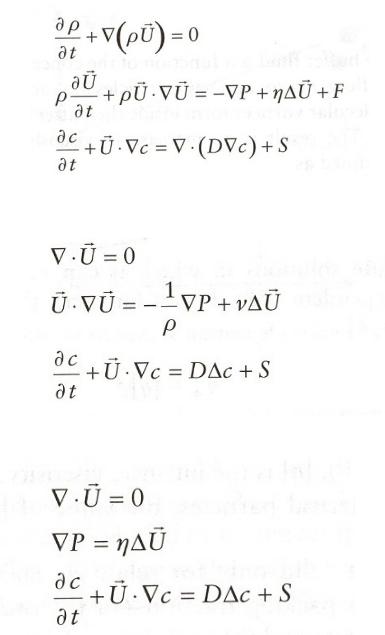
Complete formulation: a system of 5 scalar equations with five unknowns (u, v, w, P, c), two fluid properties (ρ and η), the diffusion constant of the species (D), and
NS two external actions on the fluid (the body force per unit volume F and the concentration source or sink per unit volume S
Usually in microfluidics systems, the flow of the buffer
fluid is permanent (steady state) and only the concentration changes with time. Moreover, we can assume that ρ, η and D are constant and that there are no body forces (gravity
is usually negligible in very small systems)
If the hypothesis of creeping flow is valid, ie, the Stokes approximation is justified (inertial forces much smaller than viscous forces), the system above collapses to
a linear system (under the condition that the function S is well behaved).
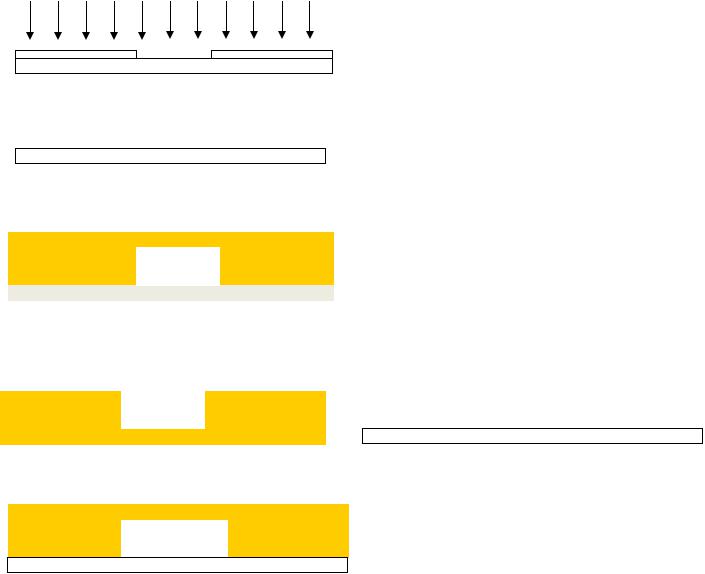
Microfluidic systems by soft lithography
UV exposure
• Fabrication of a mold using SU-8 photoresist
-typical channel dimensions:
|
|
|
|
|
thickness: |
20 µm |
|
|
|
|
|
||
|
|
|
|
|
width: |
10-~300 µm |
|
|
|
|
|
length: |
100’s of µm to cm’s |
|
|
|
|
|||
|
|
|
|
|
|
|
|
|
|
|
|
|
|
• Replication of mold in PDMS
• Activate surface of PDMS and substrate
O2 plasma, UV ozone or corona discharge
• Seal PDMS microchannel to substrate

Fluidic unit operations
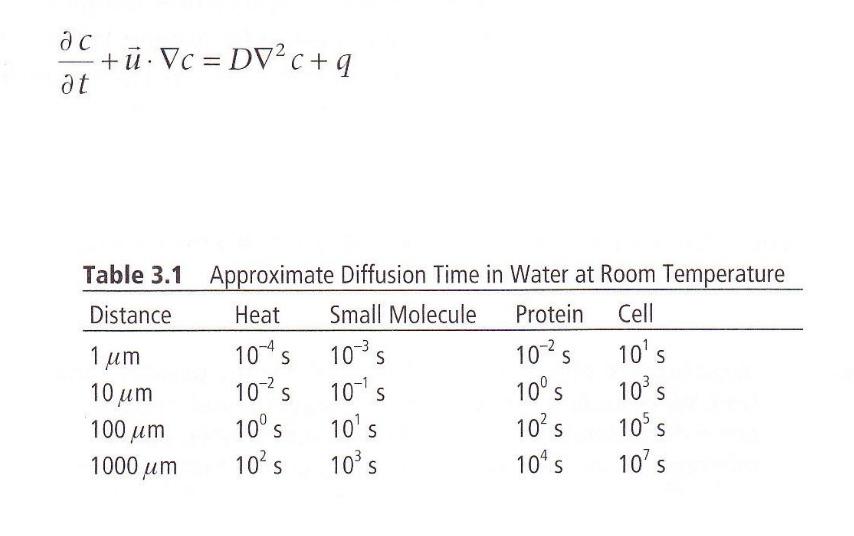
Micromixing within microfluidic devices
Convection/diffusion transport equation for a single species
small molecules (ions, glucose, urea, etc.) have diffusivities ~10-10-10-9 m2/s, proteins have diffusivities of ~10-12-10-11 m2/s
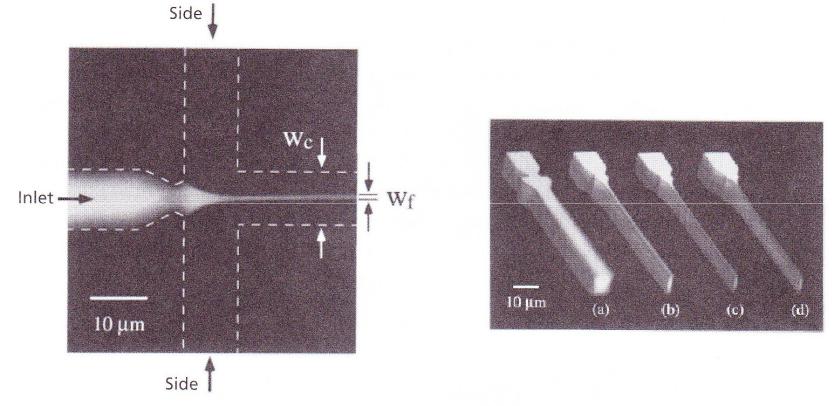
Passive micromixers
- hydrodynamic focusing
flow rate ratios from (a) 0.366, (b) 0.224, (c) 0.208, (d) 0.194
The sheathing streams, which are infused at a higher flow rate than the sample stream, focus or reduce the width of the sample stream
→ reduce the diffusional path length for mixing
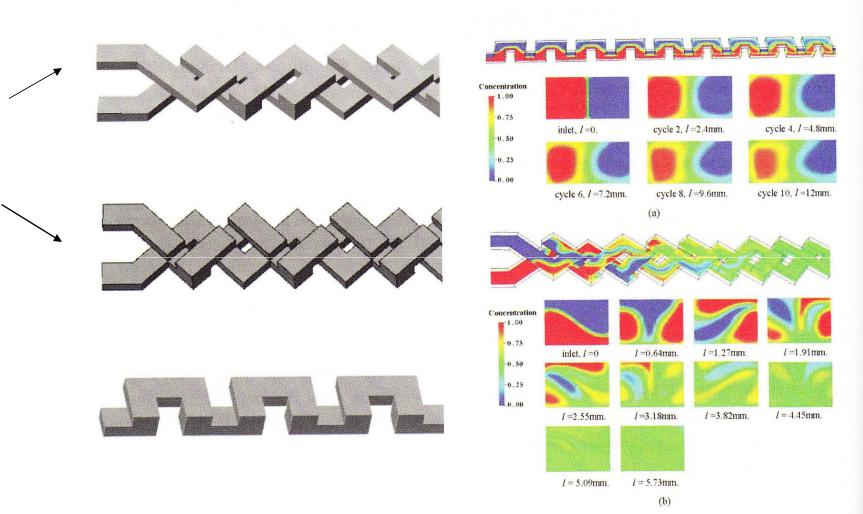
Passive micromixers - chaotic advection
In a chaotic flow field, flow elements that are initially close to each other may become widely separated by stretching and folding of material lines even within a laminar flow field
TLCCM: two-layer crossing
channel micromixers
C-shaped serpentine micromixer

Passive micromixers - chaotic advection
Patterned grooves twist incoming flow streamlines, creating vortices and hence chaotic advection within the flow stream
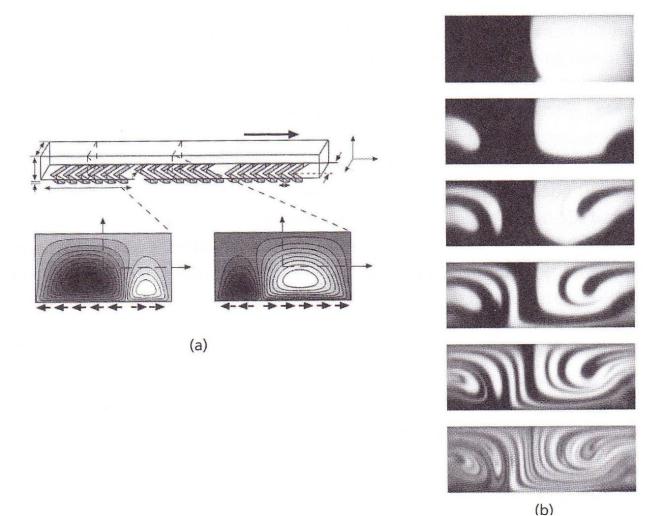
Passive micromixers - chaotic advection
Herringbone shaped grooves embedded into the channel floor, periodically alternating the direction of the herringbone pattern
The fluid experiences a repeated sequence of rotational and extensional local flows
→ a high extent of mixing (>95%) was observed for Re up to 100 and two fluids were able to
fully mix within a 3-cm SHM (staggered herringbone micromixer) even with Pe of the order of 103
